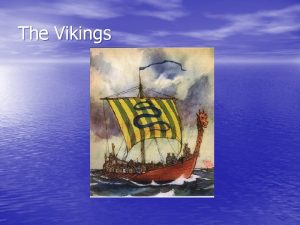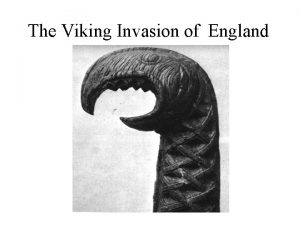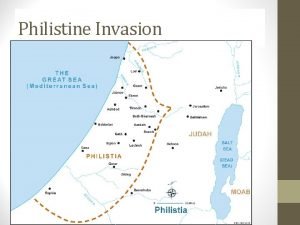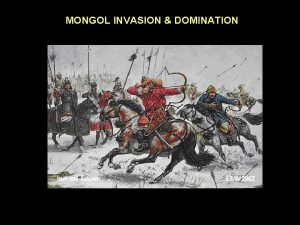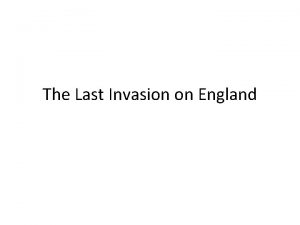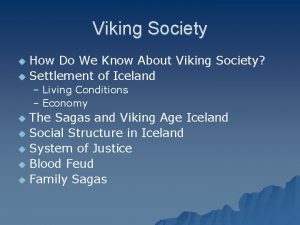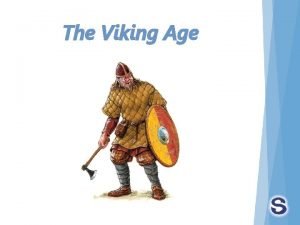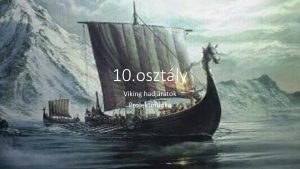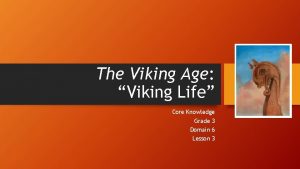The Viking Invasion of England The Typical Viking











- Slides: 11

The Viking Invasion of England

The Typical Viking • Vikings were usually young men who owned no land relied on pirating for a living • Most Norwegians looked down upon the Vikings, because of their excessive boasting and their violent exploits. • They rules the North Oceans from the 8 th to 11 th centuries

• The Vikings were proven to have traveled to North America 500 years before Columbus. • It is rumored that they moved as far west as Oklahoma. • The Vikings did not wantonly loot, rape, and pillage everywhere they went, though they were not above it. • They were extremely interested in establishing trade routes, as well as acquiring wealth • VIKING WARRIORS DID NOT WEAR HORNED HELMETS.


The Viking Invasion of England • First raids on England we said to be in the rule of Beorhtric (786 -802) • In 789, 3 Norwegian ships arrived from Hordaland. They killed the king’s reeve. • In 793, the Vikings attacked Northumbria, “There were exceptional flashes of lightning and fiery dragons were seen flying in the air. ”

The first raid

• In 795, Norwegians attacked Ireland at Lambey Island. • By 840, Turgeis colonized Ulster • Turgeis captured Armagh, the ecclesiastical center of Ireland. • He is credited with creating the cities of Anagassan, Dublin, Wexford, Waterford, Cork, Limerick. • Turgeis was killed in 840, and the Danes and Norwegians exchanged power for about 10 years.


• Norwegians retook the area in 852 until 902. • In England, Eirik Bloodaxe became king of York, for 1 year. • Essentially, Ireland was colonized by Norwegian, and England was colonized by the Danes. • In 951, Olaf Kvaran gave up hope on acquiring Northumbria and he saw Dublin fall. • Viking empire began shrinking about 1040.

• In 1052, the Vikings lost Ireland. • In 1065, they lost Scotland. • The Norwegian-Danish Treaty in 1064 was one of the obvious markings of the end of the Viking Age. • Many Vikings continued their way of life for many years after the “end of the age. ” • The Normans, or Norse-Men, invaded England in 1066.

